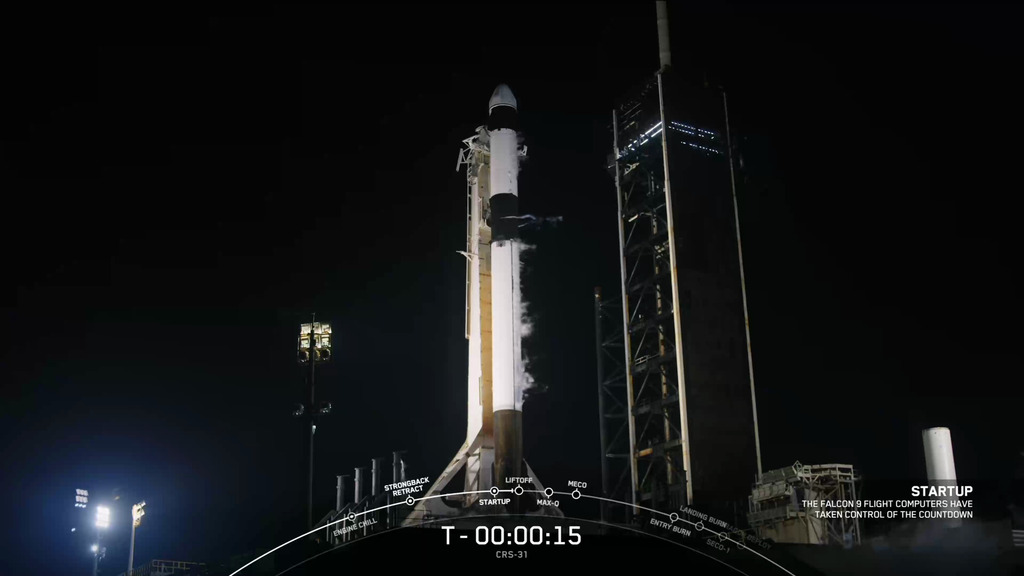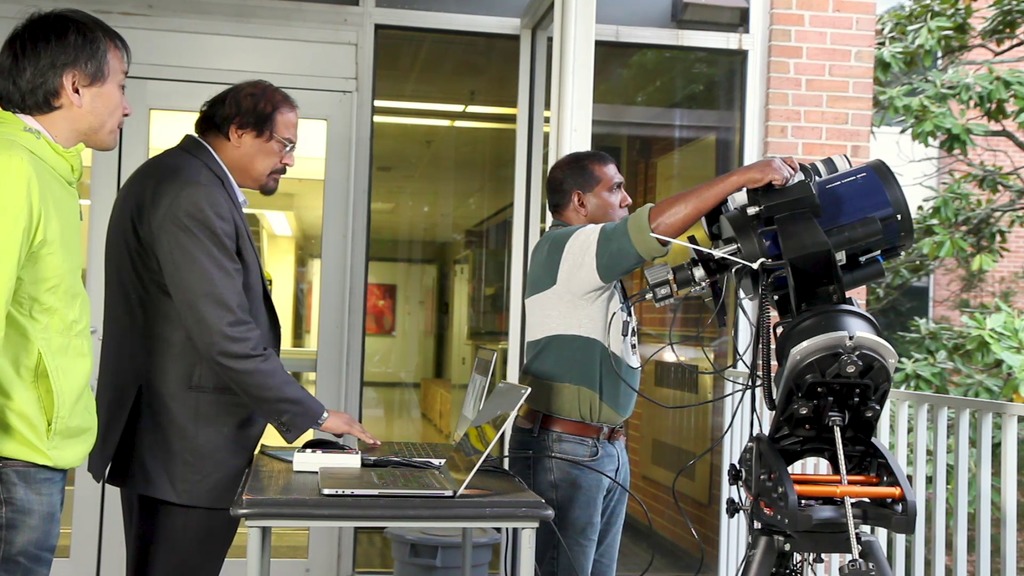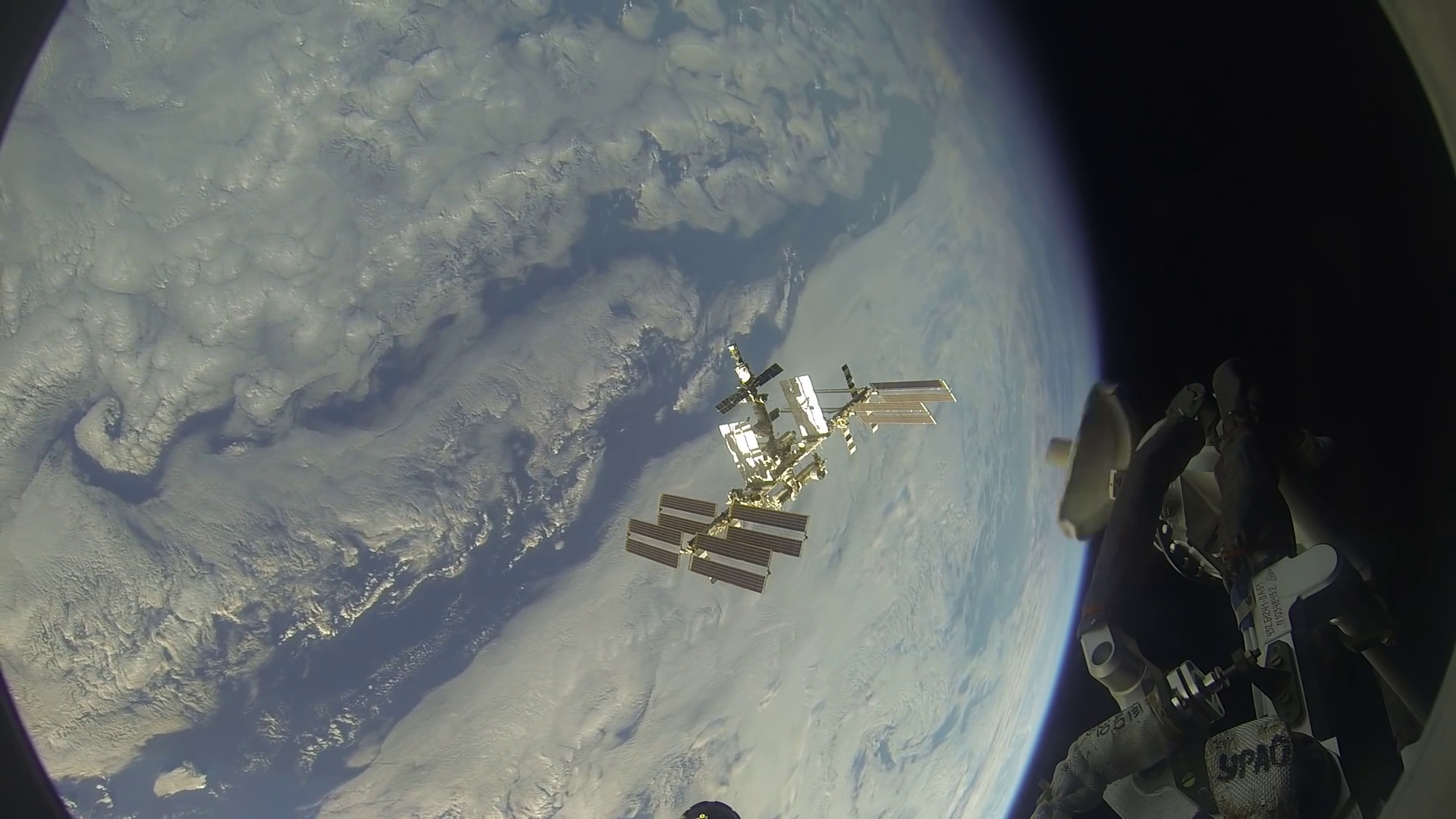Coronal Diagnostic Experiment (CODEX)
CODEX is a solar coronagraph that will be installed on the International Space Station to gather important information about the solar wind and how it forms. A coronagraph blocks out the bright light from the Sun to better see details in the Sun's outer atmosphere, or corona. CODEX is a collaboration between NASA Goddard Space Flight Center and the Korea Astronomy and Space Science Institute (KASI) with additional contribution from Italy's National Institute for Astrophysics (INAF).
To learn more about the experiment, visit: https://science.nasa.gov/mission/codex/
In this time lapse animation, the CODEX instrument can be seen mounted on the EXpedite the PRocessing of Experiments to Space Station (EXPRESS) Logistics Carrier Site 3 (ELC-3) onboard the International Space Station.
Credit: CODEX team / NASA
In this time lapse animation, the CODEX instrument is transferred from the SpaceX Cargo Dragon vehicle to the EXpedite the PRocessing of Experiments to Space Station (EXPRESS) Logistics Carrier Site 3 (ELC-3) where it will be installed onboard the International Space Station.
Credit: MAGIK Robotic analysis team / NASA
The CODEX instrument undergoing final flight preparation at the Kennedy Space Flight Center Space Station Processing Facility (SSPF). Protective covering is being added temporarily in preparation for move from SSPF to SpaceX Dragon Processing Facility (DPF).
Credit: CODEX team / NASA
The CODEX instrument undergoing final flight preparation at the Kennedy Space Flight Center Space Station Processing Facility (SSPF). Protective covering is being added temporarily in preparation for move from SSPF to SpaceX Dragon Processing Facility (DPF).
Credit: CODEX team / NASA

Jeff Newmark, principal investigator for CODEX, stands with the instrument at the Kennedy Space Flight Center Space Station Processing Facility. CODEX successfully completed all testing at the site and is awaiting integration into the launch vehicle.
Credit: CODEX team / NASA

The CODEX instrument undergoing final flight preparation at the Kennedy Space Flight Center Space Station Processing Facility.
Credit: CODEX team / NASA

The CODEX instrument undergoing final flight preparation at the Kennedy Space Flight Center Space Station Processing Facility.
Credit: CODEX team / NASA

The CODEX instrument is unpacked at the Kennedy Space Center.
Credit: CODEX team / NASA

CODEX prepares for the thermal vacuum thermal balance test at Goddard Space Flight Center. This test verifies that CODEX can survive and operate successfully in the vacuum of space and under the changing temperatures of day and night cycles.
Credit: Korea AeroSpace Administration (KASA) / Korea Astronomy and Space Science Institute (KASI)

CODEX prepares for the thermal vacuum thermal balance test at Goddard Space Flight Center. This test verifies that CODEX can survive and operate successfully in the vacuum of space and under the changing temperatures of day and night cycles.
Credit: Korea AeroSpace Administration (KASA) / Korea Astronomy and Space Science Institute (KASI)

CODEX prepares for the thermal vacuum thermal balance test at Goddard Space Flight Center. This test verifies that CODEX can survive and operate successfully in the vacuum of space and under the changing temperatures of day and night cycles.
Credit: CODEX team / NASA

CODEX prepares for the thermal vacuum thermal balance test at Goddard Space Flight Center. This test verifies that CODEX can survive and operate successfully in the vacuum of space and under the changing temperatures of day and night cycles.
Credit: Korea AeroSpace Administration (KASA) / Korea Astronomy and Space Science Institute (KASI)

The CODEX instrument rests inside a clean facility at Goddard Space Flight Center.
Credit: CODEX team / NASA

The CODEX instrument performs day-in-the-life testing at Goddard Space Flight Center. This uses an artificial sun to test the ability of CODEX to track the real Sun and obtain the necessary data during a typical observing period.
Credit: Korea AeroSpace Administration (KASA) / Korea Astronomy and Space Science Institute (KASI)

The CODEX instrument performs day-in-the-life testing at Goddard Space Flight Center. This uses an artificial sun to test the ability of CODEX to track the real Sun and obtain the necessary data during a typical observing period.
Credit: Korea AeroSpace Administration (KASA) / Korea Astronomy and Space Science Institute (KASI)

The CODEX instrument undergoes final thermal blanket assembly in preparation for flight.
Credit: Korea AeroSpace Administration (KASA) / Korea Astronomy and Space Science Institute (KASI)

The CODEX instrument performs day-in-the-life testing at the Goddard Space Flight Center. This uses an artificial sun to test the ability of CODEX to track the real Sun and obtain the necessary data during a typical observing period.
Credit: CODEX team / NASA

The CODEX instrument prepares for the hardware-in-the-loop simulation at Goddard Space Flight Center. This tests the ability of the entire CODEX electrical system to properly operate.
Credit: CODEX team / NASA

The CODEX instrument is transferred from environmental testing to a clean facility at Goddard Space Flight Center.
Credit: CODEX team / NASA

Team members prepare the CODEX instrument for Electromagnetic Interference and Electromagnetic Compatibility testing at Goddard Space Flight Center. These tests ensure that CODEX will operate as intended in its shared operating environment while, at the same time, not affecting the ability of other equipment within the same environment to operate as intended.
Credit: CODEX team / NASA

The CODEX instrument undergoes the Aronson test where the instrument center of gravity and moments of inertia are measured.
Credit: CODEX team / NASA

Team members work on installing the thermal blankets on the CODEX instrument. These blankets insulate CODEX from space.
Credit: CODEX team / NASA

Team members pose with the CODEX instrument in a clean facility during initial integration of the coronagraph with the pointing system.
Credit: CODEX team / NASA

The CODEX instrument is calibrated at the Italian National Institute for Astrophysics (INAF) Optical Payload System (OPSys) Facility36 hosted by Altec S.p.a, in Turin, Italy.
Credit: Korea AeroSpace Administration (KASA) / Korea Astronomy and Space Science Institute (KASI)

The team at work in the Astrophysics (INAF) Optical Payload System (OPSys) Facility36 hosted by Altec S.p.a, in Turin, Italy.
Credit: Korea AeroSpace Administration (KASA) / Korea Astronomy and Space Science Institute (KASI)

The CODEX instrument undergoes vibration testing at Wallops Flight Facility. Vibration simulates the launch environment on the rocket and ensures the instrument will successfully operate after the launch. The CODEX instrument is wrapped to protect it from the local air environment.
Credit: Korea AeroSpace Administration (KASA) / Korea Astronomy and Space Science Institute (KASI)

The CODEX instrument undergoes vibration testing at Wallops Flight Facility. Vibration simulates the launch environment and ensures the instrument will successfully operate after the launch. Shown here are the mounting interface plates for the CODEX instrument.
Credit: Korea AeroSpace Administration (KASA) / Korea Astronomy and Space Science Institute (KASI)

The CODEX instrument undergoes vibration testing at Wallops Flight Facility. Vibration simulates the launch environment on the rocket and ensures the instrument will successfully operate after the launch. The CODEX instrument is wrapped to protect it from the local air environment.
Credit: Korea AeroSpace Administration (KASA) / Korea Astronomy and Space Science Institute (KASI)

The CODEX filter wheels undergo functional testing at Wallops flight Facility.
Credit: Korea AeroSpace Administration (KASA) / Korea Astronomy and Space Science Institute (KASI)

The CODEX filter wheels undergo functional testing at Wallops Flight Facility.
Credit: Korea AeroSpace Administration (KASA) / Korea Astronomy and Space Science Institute (KASI)

The CODEX filter wheels undergo vibration testing at Wallops Flight Facility.
Credit: Korea AeroSpace Administration (KASA) / Korea Astronomy and Space Science Institute (KASI)

The CODEX flight camera undergoes functional testing at Wallops Flight Facility.
Credit: Korea AeroSpace Administration (KASA) / Korea Astronomy and Space Science Institute (KASI)

The CODEX coronagraph during optical alignment and assembly.
Credit: CODEX team / NASA

In this composite image, an orange square identifies where the CODEX instrument will be placed onboard the International Space Station and what it will look like.
Credit: CODEX team / NASA
Credits
Please give credit for this item to:
NASA's Goddard Space Flight Center
-
Producer
- Lacey Young (eMITS)
-
Writer
- Abbey A. Interrante (ADNET Systems, Inc.)
Release date
This page was originally published on Monday, August 12, 2024.
This page was last updated on Monday, October 7, 2024 at 3:31 PM EDT.


![Music credit: "Gear Wheels" by Fabrice Ravel Chapuis [SACEM] from Killer Tracks Complete transcript available.Watch this video on the NASA Goddard YouTube channel.](/vis/a010000/a013200/a013291/BITSE_ReadyForFlight_YouTube.00283_print.jpg)


